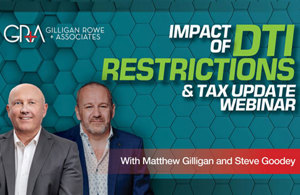
Prior to the inception of the bright-line rule, it was relatively common practice to restructure the ownership of residential property to get better asset protection, estate planning and tax outcomes, or when circumstances changed. For example, you might convert an existing home to being a rental, or own a holiday home personally that you want to be protected in a trust as a long-term family asset.
Once the bright-line rule came along, and especially when it was extended to five years, it became far more difficult to restructure ownership of residential property because you risked (i) triggering a taxable gain if the property was still within its original bright-line period; and/or (ii) resetting the bright-line clock. These problems were compounded further in March 2021 when the bright-line period was extended to 10 years and interest limitation rules were introduced.
However, many readers will be aware that in conjunction with the extension of the bright-line period to 10 years, the government decided to introduce “rollover relief” to allow for restructures of the ownership of residential property to take place in restricted circumstances. At the time this was an unexpected, but welcome, development.
What is rollover relief?
Rollover relief is a tax concession that means a residential property can be transferred from one entity to another within a family group, without triggering tax to pay under the bright-line rule, without triggering a resetting of the bright-line clock, and without compromising any existing entitlements to claim interest as a deductible expense. This means that restructuring the ownership of residential property is more feasible now than it was pre-March 2021.
That said, like all things in life there are catches, and the first catch is that not all changes in ownership qualify for rollover relief.
When does rollover relief apply?
Key scenarios where rollover relief is now available are as follows:
(a)From individual owners to a trust
(b)From a trust to a beneficiary
(c)From individuals to an LTC and vice versa
(d)From one trust to another trust
(e)From an LTC owned by individuals to a trust
Important disclaimer - this represents a high-level description of when rollover relief may be available. There are important conditions that need to be satisfied in each instance with the core philosophy being that rollover relief is intended to be available when there is no change in effective ownership. For example, an individual can transfer a residential property into a trust (scenario (a) above) with the benefit of rollover relief if the individual is a principal settlor (i.e. the person who has gifted the most into the trust) and a beneficiary, and all beneficiaries are within four degrees of blood relationship to the principal settlor.
When does rollover relief not apply?
Some scenarios where rollover relief is not available are as follows:
(a)The transfer of property to an “ordinary” company (an ordinary company in this context is a company that is not an LTC)
(b)The transfer of shares in an LTC from one owner to another, including from an individual to a trust
(c)The transfer of shares in an ordinary company from one owner to another, including from an individual to a trust
Watch out for other potential tax consequences
Another important disclaimer - these rollover relief concessions mean that you avoid negative consequences that might otherwise apply under the bright-line or interest limitation rules. However, they do not relieve you from other potential negative tax consequences that can arise on transferring property, such as tax to pay due to tainting or depreciation recovery.
As always, there is a high degree of complexity to this area of land tax, and you should always seek expert advice before embarking on a restructure.
If you’d like help with the rollover relief rules, or any aspect of restructuring and tax planning, contact us at GRA on +64 9 522 7955 or by filling out our online form. The initial meeting is free if you are new to our practice.

Anthony Lipscombe
Tax and Asset Planning Partner
Did you like this article? Subscribe to our newsletter to receive tips, updates and useful information to help you protect your assets and grow your net worth. We're expert accountants providing expert advice to clients in NZ and around the world.
Disclaimer: This article is intended to provide only a summary of the issues associated with the topics covered. It does not purport to be comprehensive nor to provide specific advice. No person should act in reliance on any statement contained within this article without first obtaining specific professional advice. If you require any further information or advice on any matter covered within this article, please contact the author.
Comments
Testimonials
We enjoyed everthing about Property School. Every night was hugely valuable and inspiring. We went away energised. - Roz C - September 2017
Gilligan Rowe and Associates is a chartered accounting firm specialising in property, asset planning, legal structures, taxation and compliance.
We help new, small and medium property investors become long-term successful investors through our education programmes and property portfolio planning advice. With our deep knowledge and experience, we have assisted hundreds of clients build wealth through property investment.
Learn More








































